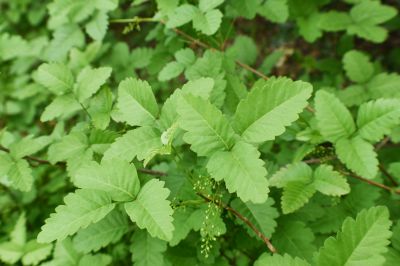Popular Poison Ivy Prevention Tools for Safe Outdoors Activities
Explore the most trusted products to prevent poison ivy contact and enjoy outdoor adventures with confidence.
 Controlling poison ivy effectively requires a combination of proper identification, preventative measures, and suitable products. Poison ivy, a common plant that can cause skin irritation upon contact, often grows in wooded areas, along fences, or in overgrown yards. To manage its spread, many individuals turn to various products designed to prevent its growth or facilitate removal. These products range from herbicides and protective clothing to natural deterrents and specialized tools. Selecting the right combination depends on the extent of the infestation, the surrounding environment, and personal preferences for safety and ease of use.
Controlling poison ivy effectively requires a combination of proper identification, preventative measures, and suitable products. Poison ivy, a common plant that can cause skin irritation upon contact, often grows in wooded areas, along fences, or in overgrown yards. To manage its spread, many individuals turn to various products designed to prevent its growth or facilitate removal. These products range from herbicides and protective clothing to natural deterrents and specialized tools. Selecting the right combination depends on the extent of the infestation, the surrounding environment, and personal preferences for safety and ease of use.
Top Overall Option
Herbicide Spray for Poison Ivy
A versatile herbicide spray designed to target woody plants and vines, this product offers a straightforward application process suitable for both small and large infestations. It is formulated to be effective when applied directly to the foliage, helping to inhibit the plant’s growth over time. Proper use involves applying during active growth periods and avoiding contact with desirable plants. This type of product is commonly used by homeowners and professionals alike for its ease of use and broad-spectrum effectiveness.
Types of Products For Poison Ivy Controls
Herbicide Sprays
Chemical solutions formulated to target and kill poison ivy, typically applied directly to the plant’s foliage.
Brush and Vine Killers
Specialized products designed to eradicate woody vines and brush, including poison ivy, with minimal impact on surrounding plants.
Protective Clothing and Gear
Long-sleeved shirts, gloves, and eye protection to prevent skin contact during removal or application.
Barrier Sprays
Preventative sprays that create a protective coating on plants and soil to inhibit poison ivy growth.
Natural Oil-Based Sprays
Plant-based deterrents that may help reduce the spread of poison ivy without chemicals.
Vine Cutting Tools
Pruners and saws designed for safely cutting and removing poison ivy vines at the ground or from trees.
Soil Treatments
Products applied to soil to prevent seed germination and reduce new poison ivy growth.
Mulching Materials
Mulch layers that can suppress poison ivy seedlings and prevent establishment.
Herbicide-Resistant Plants
Plants that are resistant to certain herbicides, used to replace areas where poison ivy has been removed.
Targeted Root Killers
Products designed to penetrate the soil and kill poison ivy roots directly.
Popular Choices
Highly concentrated formulations that can be mixed and applied to large infestations for effective control.
Pre-mixed sprays convenient for quick application on smaller poison ivy patches.
Products formulated specifically to target woody vines like poison ivy with visible results over time.
Complete gear kits including gloves, suits, and masks for safe handling during removal.
Sprays designed to create a protective barrier on plants and soil around infested areas.
Plant-based options that may help deter poison ivy growth when used regularly.
Specialized tools for safely cutting and removing poison ivy vines at various heights.
Products that work in the soil to prevent new poison ivy from germinating.
Materials used to suppress seedling growth and protect treated areas.
Plants that can be used to replant areas after poison ivy removal, resistant to specific herbicides.
Herbicides formulated specifically for woody plants and vines are frequently used to suppress poison ivy. When applied correctly, these products can inhibit the plant's ability to photosynthesize, leading to gradual decline. Always follow manufacturer instructions regarding application methods and timing to minimize unintended damage to surrounding vegetation. In addition to chemical controls, physical removal methods such as cutting and digging can be effective, especially when combined with protective gear to prevent skin contact.
Preventative products play a crucial role in managing poison ivy before it becomes a major problem. Barrier sprays create a protective layer on the foliage and soil, reducing the likelihood of new growth. Personal protective equipment, including gloves, long sleeves, and eye protection, is essential when handling or working near poison ivy. Natural deterrents, like certain plant oils or commercial sprays, may also help keep the plant at bay, although their effectiveness can vary. Combining these approaches with regular monitoring can help maintain control over poison ivy in outdoor spaces.
Key Buying Considerations
- Extent of the poison ivy infestation to determine the appropriate product size and type.
- Safety precautions, including protective gear and application methods, to prevent skin contact.
- Environmental impact and potential effects on nearby desirable plants.
- Application timing, ideally during active growth periods for better absorption.
- Ease of use, especially for DIY homeowners versus professional landscapers.
- Product formulation—liquid sprays, concentrates, or natural oils—based on preference and effectiveness.
- Reentry time after application to ensure safety before re-entering the treated area.
- Compatibility with existing landscaping and surrounding vegetation.
- Long-term control options versus quick eradication solutions.
- Cost considerations, balancing price with product effectiveness and coverage area.
- Regulatory compliance and adherence to local guidelines for herbicide use.
- Potential for resistance development with repeated use of certain chemicals.
- Availability of protective equipment and accessories to facilitate safe application.
- Customer reviews and product ratings for insights on real-world performance.
- Brand reputation and manufacturer support for troubleshooting and advice.
